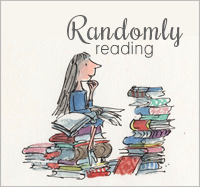February is Black History Month, and every year, there are more, but definitely not enough, wonderful books published that offer inspiring stories about people and events who have contributed to Black History. Here is a small roundup of some of the newest books (OK, there's one older book, too). For even more suggestions of books that can be read at home or in the classroom, please visit: Colours of Us.
Let the Children March by Monica Clark-Robinson,illustrated by Frank Morrison
2018, Houghton Mifflin Harcourt, 40 pages
In 1963, in Birmingham, Alabama, Dr. Martin Luther King, Jr. called for an army of peaceful protesters to mobilize against Jim Crow Laws and to fight for African American freedom. But if adults marched, they knew there would be trouble with their jobs and they had families to take care of. King's call was answered by Birmingham's children. Despite the fears of the narrator's parents, she and her brother choose to march in their place, knowing that they might be arrested. The young marchers face not only jail, but also water hoses, police dogs, and angry white people, yet, they keep going day after day. By keeping the sister and brother nameless, they represent 'everychild' who risked their lives and marched in this Children's Crusade. The simplicity with which the text of this book is written makes clear the determination of these young marchers, who never wavered in their mission. Morrison's boldly colorful oil painted illustrations realistically reflect the courage, strength and determination of these brave young people. Be sure to read the Afterword, and Artist's Statement in the back matter. Complement this book by paring it with Cynthia Levinson's The Youngest Marcher: The Story of Audrey Faye Hendricks, a Young Civil Rights Activist.
Trailblazer: The Story of Ballerina Raven Wilkinson by Leda Schubert,illustrated by Theodore Taylor III
2018, Little Bee Publishers, 40 pages
When Raven Wilkinson was 5 years old, her saw her first ballet and was smitten with dance. When she was 9, her uncle gave her ballet lessons for her birthday. It didn't take long for her teacher, the well-respected Madame Maria Swoboda, to recognize that Raven was a student with real talent. In 1953, Raven started Columbia University, and auditioned for the Ballet Russe. In 1955, at Raven's third audition, she was finally selected to dance with the Ballet Russe de Monte Carlo. The ballet traveled quite a bit, and, being African American, Raven often met with racist attitudes in southern states that sometimes almost turned into physical danger. Nevertheless, Raven stayed with Ballet Russe for six years, leaving in 1962 for Holland and the Dutch National Ballet, where she danced for seven years. Returning to the US, Raven danced with the New York City Opera until 1985. Raven was a truly courageous trailblazer, paving the way for Misty Copeland to become the first African American principle dancer with the American Ballet Theater. Theodore Taylors line illustrations have the quality of simple comic book images but make no mistake, they convey with clarity both the happiness and seriousness of Raven Wilkinson's career and they do not shy away from the racist obstacles she faced as a young African American dancer. Be sure to read the forward by Misty Copeland, and the Afterword by Raven Wilkinson. Pair this with Firebird: Ballerina Misty Copeland Shows a Young Girl How to Dance Like the Firebird.
The United States v. Jackie Robinson by Sudipta Bardhan-Quallen,illustrated by R. Gregory Christie
2018, Balzer & Bray, 40 pages
Jackie Robinson had to deal with segregation every day of his life growing up in Pasadena, California, including in college despite being one of the most talented athletes in the country. Realizing he could never play professional sports because he was African American, Jackie left college, and when the US entered WWII, he enlisted in the army. The army was still segregated, but by 1944, Jackie had been promoted to second lieutenant. When the army was ordered desegregated, Jackie got on a military bus one day and sat where he wanted, but not where the bus driver wanted him to sit - in the back of the bus. Jackie refused to move. He was arrested and faced a court martial - but he stood up for what he believed was right and won. Jackie went on to become the first African American to play on a major league baseball team - the Brooklyn Dodgers. Bardhan-Quallen has written an inspiriting biography of this trailblazer who never backed down because of his race. Christie's acryla gouache illustrations reflect the quite dignity of Jackie Robinson's life. Pair this with Between the Lines: How Ernie Barnes Went from the Football Field to the Art Gallery.
Between the Lines: How Ernie Banks Went from the Football Field to the Art Gallery
by Sandra Neil Wallace, illustrated by Bryan Collier
2018, Paula Wiseman Books, 48 pages
When Ernie Barnes was a young boy, he loved to draw, and after seeing the art hanging in the library where his mother worked, he knew he wanted to be an artist. But becoming an artist wasn't the easiest thing. Because he was 6'3" Ernie was recruited to play football, first for his high school, than in college, and finally in the pros. But Ernie never gave up his dream of being an artist, even after his coach tore up his sketchbook. As a football player, Ernie observed everything he saw with the eye of an artistic, not a player and much of what he saw was later realized on canvas. Luckily, after being injured, Ernie was offer a position with the New York Jets - as official team artist at full salary. I'm a girl who doesn't know very much about football, so I really appreciated the way Wallace focused on Ernie's drive to be an artist rather than a player. Wisely, Collier didn't try to imitate Ernie's style of art, creating his own dynamic watercolor and collage illustrations. There's plenty of back matter in this well researched book, including a Historical Note, an Author's Note, an Illustrator's Note. There are also suggestions for learning more, books for further reading, videos and films of interest, and Additional Resources.
Ella Fitzgerald: The Tale of a Vocal Virtuosa by Andrea Davis Pinkney with
Scat Cat Monroe
illustrated by Brian Pinkney
2002, Jump at the Sun, 32 pages
Ella Fitzgerald was the Queen of Scat, so it only makes sense that her story should be told by the very hip Scat Cat Monroe, complete with zoot suit and spats. Scat Cat traces Ella's rise to stardom, dividing her story into four record tracks, cut to cut. Track 1, Hoofin' in Harlem, covers career from its beginning at the Apollo Theater's talent contest as scared 17 year-old dancer turned singer.Track 2, Jammin' at Yale, finds Ella a singer with the Chick Webb Orchestra making beautiful music together at Yale. Track 3, Stompin' at the Savoy, Ella and the Chick Webb Orchestra play Harlem's very popular Savoy Ballroom, where Ella sang and dance her heart out and the two made beautiful music together, even defeating the Benny Goodman Orchestra in a Battle of the Bands. Track 4, Carnegie Hall Scat, finds Ella joining the king of bebop Dizzy Gillespie. It didn't take Ella long to make bebop, "jazz on the wild side," all her own. Together, Ella, by now truly the "first Lady of Song," and Dizzy brought bebop to Carnegie Hall. Scat Cat's jazzy narration is reflected in Brian Pinkney's sometimes playful, always vibrantly colored acrylic on scratchboard illustrations really capture all the energy of a jazz track. Jazz is a true African American music genre, and Black History Month is an ideal time to introduce it and its history to young readers. This pairs nicely with the Pinkney's book Duke Ellington: The Piano Prince and His Orchestra.








































No comments:
Post a Comment